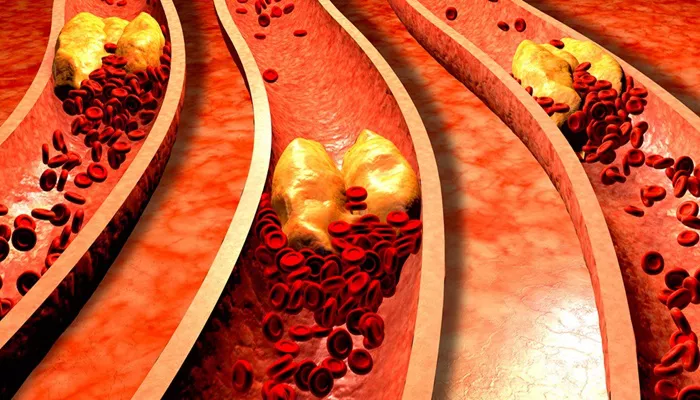In recent years, cardiovascular health has become a focal point of wellness and fitness discussions. As one of the most accessible forms of exercise, running is often recommended for improving overall health. A common question that arises is whether running can help unclog arteries, a concern stemming from the increasing prevalence of cardiovascular diseases.
This article delves into the relationship between running and arterial health, examining how regular running can influence arterial function and contribute to cardiovascular well-being.
The Anatomy of Arteries And The Problem of Atherosclerosis
To understand how running might affect arterial health, it is essential first to grasp the nature of arteries and the conditions that can affect them. Arteries are blood vessels that carry oxygen-rich blood from the heart to the rest of the body.
Atherosclerosis is a condition characterized by the buildup of plaque—a mixture of fatty substances, cholesterol, and other cellular debris—on the arterial walls. This buildup can narrow and harden the arteries, reducing blood flow and potentially leading to serious cardiovascular events like heart attacks and strokes.
Atherosclerosis develops over time and is influenced by a variety of factors including diet, genetics, and lifestyle. The progressive nature of this condition means that it can often go unnoticed until significant damage has occurred.
SEE ALSO: The 7 Major Factors That Cause Coronary Artery Disease
How Running Influences Cardiovascular Health
1. Improving Lipid Profiles
One of the primary ways running impacts arterial health is through its effect on lipid profiles. Regular physical activity, including running, helps to lower levels of low-density lipoprotein (LDL) cholesterol, often referred to as “bad” cholesterol, while increasing high-density lipoprotein (HDL) cholesterol, known as “good” cholesterol. HDL cholesterol plays a crucial role in removing LDL cholesterol from the bloodstream and transporting it to the liver for excretion. This process can help reduce the buildup of plaque in the arteries.
2. Enhancing Blood Circulation
Running promotes better blood circulation by increasing the heart rate and the force of blood flow. This enhanced circulation helps to deliver oxygen and nutrients more efficiently throughout the body and can also aid in the removal of waste products. Improved circulation can help maintain the flexibility and health of arterial walls, reducing the risk of plaque buildup.
3. Reducing Inflammation
Chronic inflammation is a significant contributor to the development of atherosclerosis. Regular exercise, including running, has been shown to have anti-inflammatory effects. By reducing levels of inflammatory markers in the blood, running helps lower the risk of arterial inflammation, which is a key factor in the progression of atherosclerosis.
4. Regulating Blood Pressure
High blood pressure (hypertension) is another risk factor for the development of atherosclerosis. Running is an effective way to manage and lower blood pressure. Consistent aerobic exercise strengthens the heart, allowing it to pump blood more efficiently and with less force. This reduction in blood pressure lessens the strain on arterial walls and decreases the likelihood of damage and plaque formation.
5. Supporting Weight Management
Obesity and excess weight are well-known risk factors for cardiovascular diseases. Running helps in weight management by burning calories and improving metabolic health. Maintaining a healthy weight reduces the strain on the heart and arteries and helps prevent conditions that can exacerbate atherosclerosis.
The Limits of Running in Unclogging Arteries
While running provides numerous benefits for cardiovascular health, it is not a panacea for completely reversing atherosclerosis or unclogging arteries. It is crucial to recognize that running alone may not eliminate existing arterial plaque. Instead, running should be part of a comprehensive approach to cardiovascular health that includes a balanced diet, medical management, and other lifestyle modifications.
1. Complementary Lifestyle Changes
To effectively manage and potentially reverse atherosclerosis, running should be complemented by other healthy lifestyle choices. This includes eating a heart-healthy diet rich in fruits, vegetables, whole grains, and lean proteins, avoiding smoking, and limiting alcohol consumption. These combined efforts can enhance the benefits of running and contribute to overall arterial health.
2. Medical Monitoring and Management
For individuals with pre-existing cardiovascular conditions or significant arterial plaque, it is essential to work with healthcare professionals. Regular medical check-ups, blood tests, and imaging studies can help monitor arterial health and guide appropriate treatment strategies.
Conclusion
In summary, running is a powerful tool for improving cardiovascular health and can play a significant role in managing factors associated with arterial plaque buildup. Through its effects on cholesterol levels, blood circulation, inflammation, blood pressure, and weight management, running contributes to overall arterial health. However, while running offers substantial benefits, it should be integrated into a broader approach to cardiovascular wellness that includes a healthy lifestyle and medical management. By understanding the positive impact of running on arterial health and adopting a holistic approach to wellness, individuals can take proactive steps towards maintaining healthy arteries and reducing the risk of cardiovascular disease.

